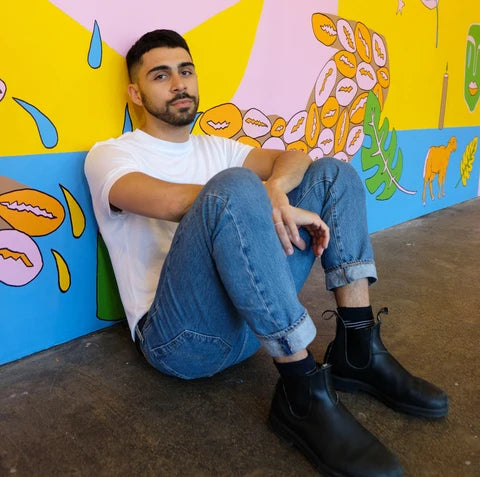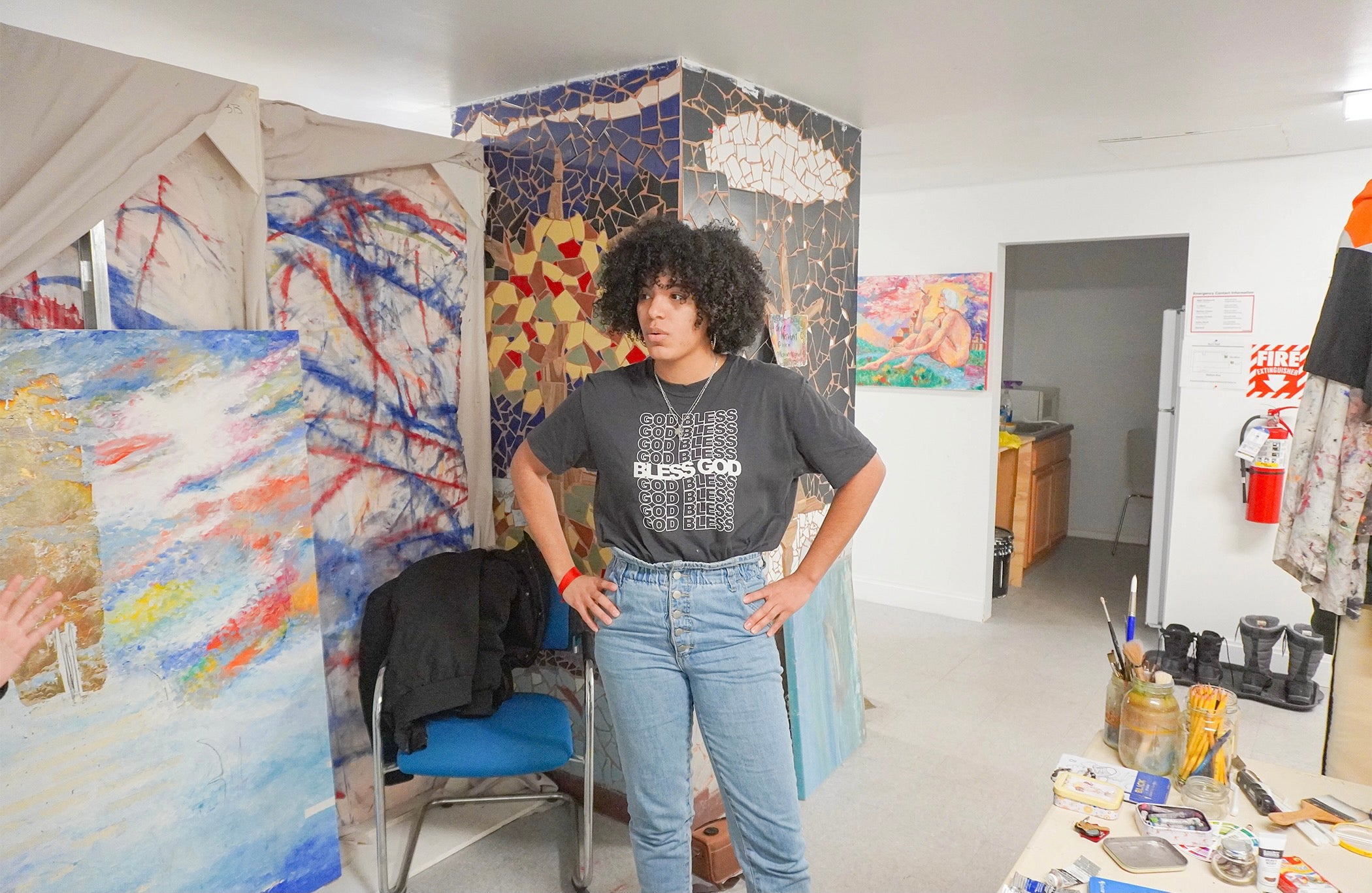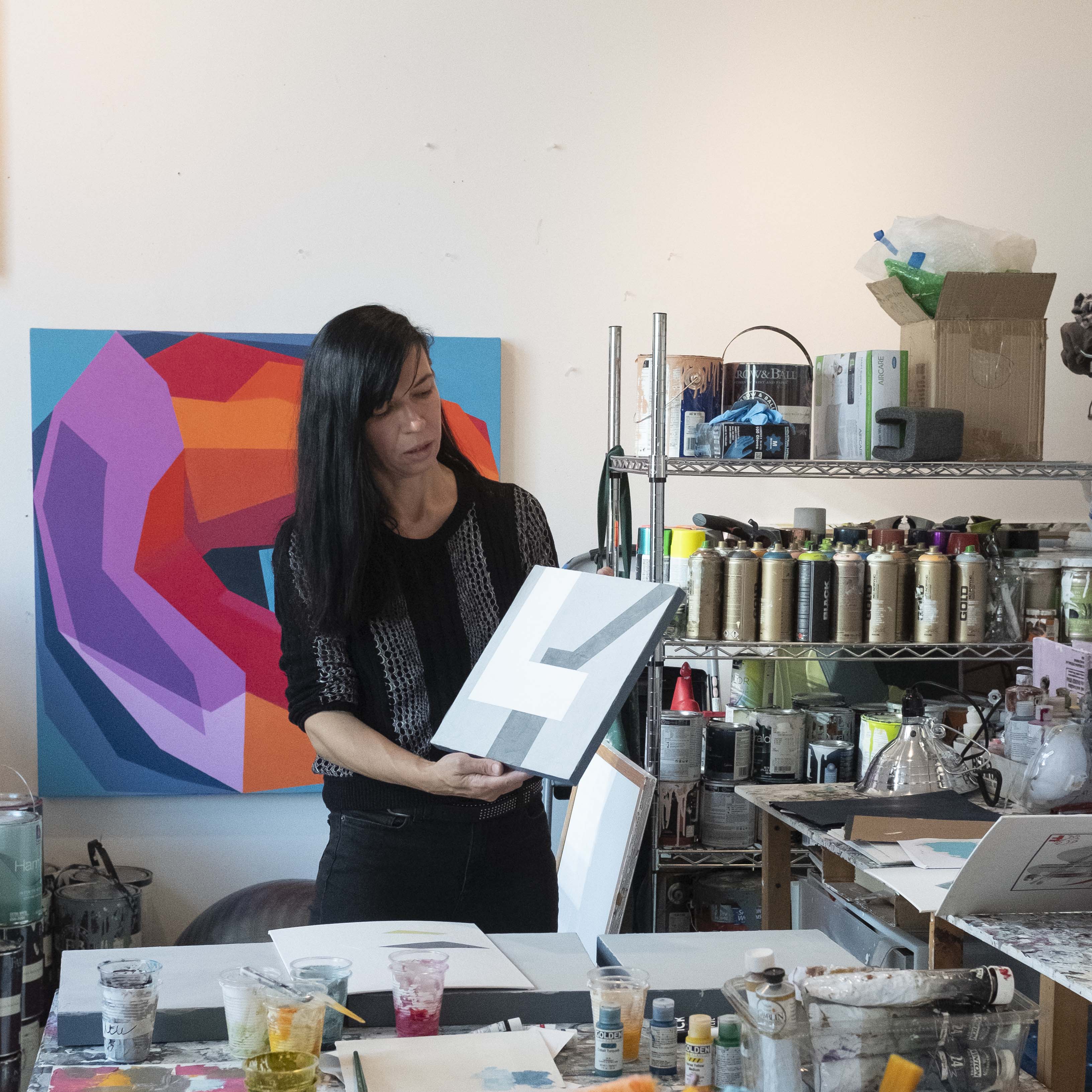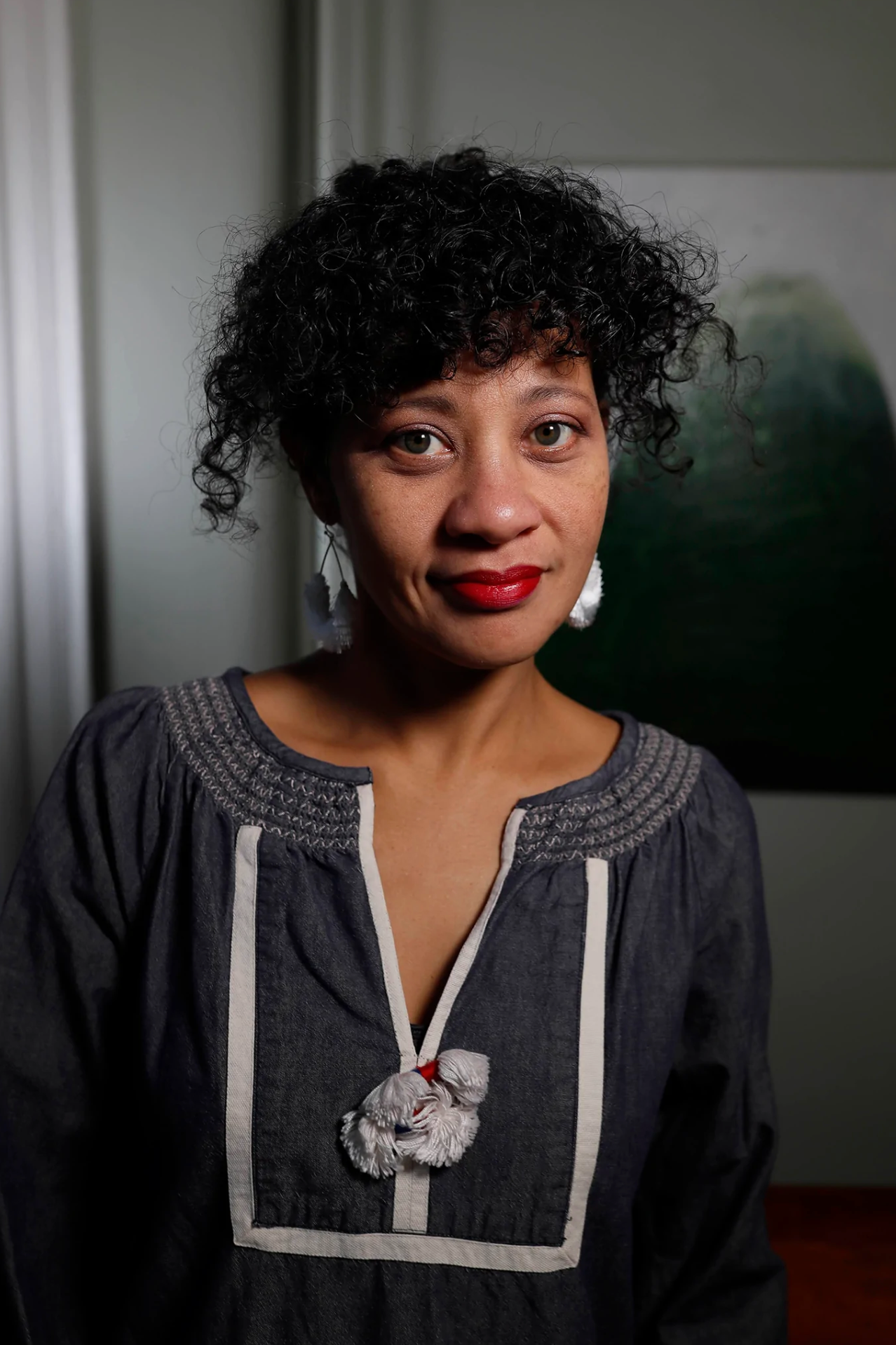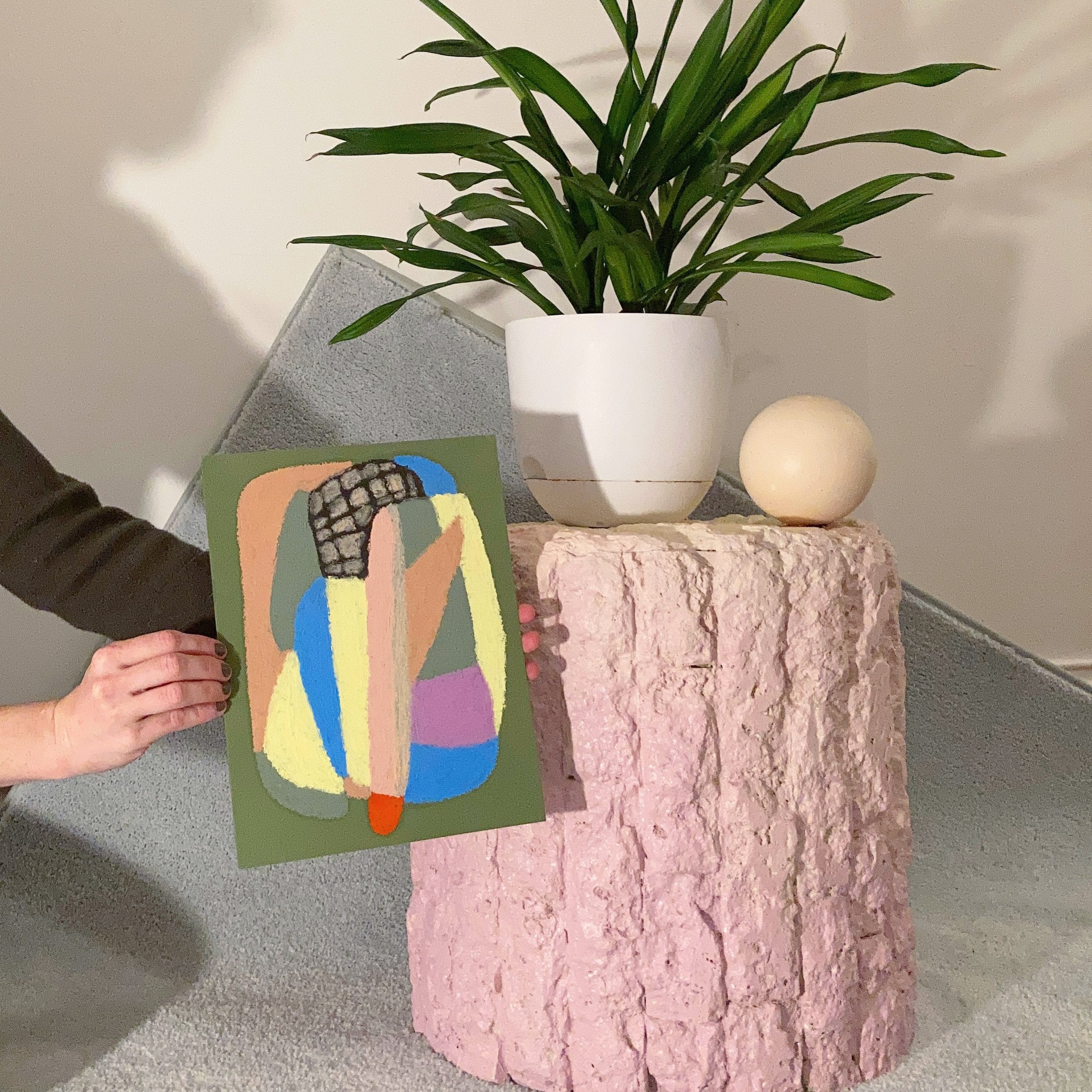No Products in the Cart
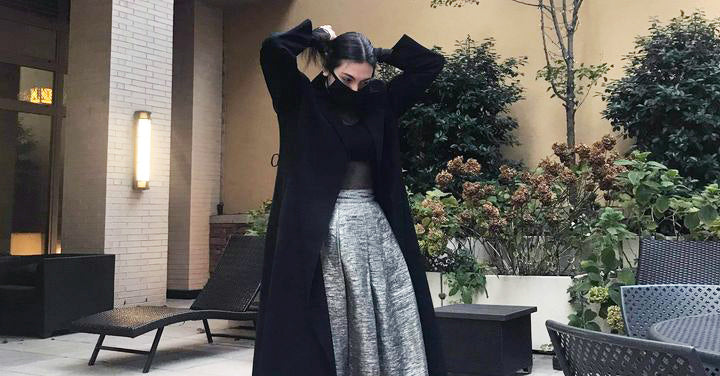
Meet Zino Haro
Hacker, Musician, Designer

Follow Zino Haro on Spotify / Medium
Hannah: If you could quickly introduce yourself?
Zino: I’m Zino!
*both laugh*
H: When I told my team I was interviewing you, they were so excited by the cybersecurity title - I think we imagined it as a cool counterculture hacker thing. What does the daily job of a cybersecurity expert entail?
Z: So there are different jobs under cybersecurity right - researcher, analyst, engineer, then people who don’t do any technology who are there to translate between HR, everybody else, and the lawyers. I would say it’s more like public relations but for very stressful topics.
Me, personally, most of what I’ve done is get emails, see if there’s shady things going on, and investigating. The extent varies a lot. Sometimes it’s just spam, especially in finance, or when you get crazy music fans at entertainment companies. There were people trying to steal artists’ information and that’s when you need to dig deep. A lot of it is googling but we also get access to databases that aren’t public.
How did Zino become Zino....?
H: On the arts side - I’m vaguely familiar with your past projects. I’ve seen some clothes you’ve designed. I’ve listened to the music you produced - but also feel like I’ve only scratched the surface.
Z: It all started after a...breakup, actually (!!)
I’ve been sewing since I was five but had never done anything with it. The person I was dating at the time was a fashion design student. I was like…”You know what? I saw what they were doing and I bet I could do it”.
I was interested more in the art part of it rather than the wearability. My first collection was..honestly not many people would wear it outside. Not very practical, delicate details. It was really expensive to do, though. Just for renting the gallery it took $1000. So I didn’t want to do it again.

This collection was called “O Fortuna” and had the gold/black color scheme based around the story of the goddess of fate/fortune and the symbol for the collection was based on the phrase "Luck [goddess] is blind", which is a crossed out eye like in this jacket (which was not on the runway)

I met a lot of random people through my project. This one guy, he was doing three shows during New York fashion week but he still texted me fifteen minutes before my show and asked if I still wanted him to come through. He later became an international model and did a lot of work in Korea. And, the person who helped me organize was a girl who later on became a musician.
Through these avenues, someone had heard of my work and invited me to join a fashion startup . That’s what I’m working on full-time right now as creative director.

Between Art, Music, Fashion
H: Looking at the range of projects you’re in, I’m curious how you jump from one to another. A common misconception seems to be that “math brain” and “creative brain” are mutually exclusive. Do you feel like you’re channeling different skill sets?
Z: I think the reason I could do cybersecurity, and why I was bad at the standard computer science stuff - not that I was bad at it but couldn’t focus on it - is that security is a lot of investigation. When doing research, I would have to pretend that I was a military hacker from another country. I’m not sure if that’s technical or creative, because it’s creating a story of what could happen, then the technical detail would be figuring out if that’s possible.
For example, this guy was sending what looked like a real email but was flagged as spam. I found out that this guy really did work at the company he said he worked at, but wasn’t in the position to be doing what the email said he does. It turned out after investigating things like which high school he went to, who his friends were - which I know sounds really creepy when I say it! - he and his friends had made a fake company to scam people. They were working in two different countries and leveraging their day jobs. I wouldn’t have pieced that together if I wasn’t imagining the story of these two friends who got out of the country and trying to make millions. I could write movies about stuff I find if I was into that.
H: So far I’m seeing that there’s a huge difference between what people think technology is and what the job entails. Like, “conceptually”, a lot of trance and techno is obsessed with mechanization and glitches while not requiring any technical knowledge of it. Does your interest in that side conceptually inform the way you make art or music?
Z: I personally don’t.
I can see it being more useful in fashion, since I don’t make EDM or techno. In fashion design I have considered it when I was in this class called Music, Technology, Philosophy, where for the final project I wanted to make a light show fabric that reacted to the sound of the audience. It was later developed by Google jacquard...And in galleries there are installations where lightbulbs that turn on when you touch them right? Or in subway stations, if a certain sensor is covered it plays a specific note.
H: if not technology, what’s a reference or point of interest that’s been connecting your different projects?
Z: Initially, I knew how to sew from when I was five because of my grandma. She’s Mexican but I wouldn’t say that’s the inspiration per se. Well, a lot of embroidery and folded fabric stuff was.
But the main designer that influenced me was Rei Kawakubo. As well as a lot of Japanese designers who were in the dark wave (movement).


For music, I have as inspiration someone that nobody knows. His name is Bevy Maco. I haven’t put anything out that reflects it, yet - partially because everytime I listen to his stuff I’m like - there’s no way I can make stuff that sounds this beautiful. Then there’s this idea that I’m sad but I have to make something - not necessarily to reflect the sadness - but just to mark the fact that I have at one point existed…

H: Sounds just like my senior thesis…
On Kawakubo though - if clothes are not meant to be worn, how are they meant to be experienced?
Z: I’ve heard a lot of opinions from designers about this.
I have one designer who actually does avant-garde stuff. He designs for Vegas shows. He says he does it so the model can put on a “performance of their soul”, sees clothes as an extension of a model’s expression. And he treats fashion shows as extensive choreography.
Compared to that, I know designers who will say “Hey put this on, you’re a hanger. Walk down this stage”. I like the take of the first designer where maybe these aren’t wearable clothes exactly, but they are tools for someone, who you might initially just see as pretty, but who can work with the designer to express something.
H: Very interesting. Especially since even everyday clothes like dresses or jeans make you move in a different way.
Z: I can also think of traditional dance clothing. In Mexico where I grew up, the traditional dance called Folklorico is performed with dresses made of three or four circles. So you can actually pull it all the way up vertically, like a butterfly or flower. Then you spin.

Social Media: Vices and Virtues
H: I wanna talk about social media now. It seems to be the form of technology closest to our lives, but the way it works is not widely understood. In your experience, how can artists take charge of the algorithm (instead of being pulled different directions by it)?
Z: Hm, I can think more of Tik Tok than Instagram.
On Instagram, even the age of the account affects whether your post is shown to people or not - if you have a new account there’s a new account boost, some hashtags don’t mean anything whereas others will “shadowban” you etc.
H: Wait, so is shadowbanning censorship? Does it target politically or ethically sensitive issues?
Z: It doesn’t have to be political, although a lot of time it is, but it’s a gray area. There was a guy named Keith Raniere who just got convicted for running child sex trafficking and a cult. He’s a mess basically. His cult was using a hashtag that was also used by Black Lives Matter. So if you censor that hashtag, are you silencing BLM or the cult? I’m not sure if that would be willful censorship or a cautionary measure against this cult figure.

Anyways! On Tik Tok.
There’s a person named Corpse Husband. No one’s seen his face. All his videos were black and white overlaid with his voice. He definitely created a brand for himself. You see a guy talking with a specific voice and color scheme, you know it’s him. So when the algorithm sees this group of people following this one guy - let’s call him A - but also sees that they follow another person, B, all the people following B will be recommended A.
Another thing I’ve noticed for musicians is that someone starts using a track in the background and it starts to trend. Like, they’ll say “put your finger down if…” and have music playing in the background. When people recreate the trend, they’ll keep using the music. Eventually it will start sounding familiar and the original song will be played.

The guy skating and drinking cranberry juice to Fleetwood Mac on Tik Tok.
H: I’m assuming though, that although musicians can technically start these trends on their own, it’s usually random users’ choices that leads to a certain piece of music trending. Like that Fleetwood Mac song? I’m not sure how they feel about the way their song’s being used.
Z: Yeah, I saw this one time a track used along with a specific hashtag was taken down.
The girl who started the challenge was a minor and it made minors be exposed. It was the song Foreigner! The artists certainly didn’t know about it, but now the song’s associated with a large group of Tik Toks that are now banned. So yes, stuff can go badly.
H: I guess there are ways to rectify the situation if things go horribly wrong.
Z: I think you really need to know where your music is, although sometimes that’s hard. Personally I get a lot of analytics from everywhere - Tik Tok’s is often delayed but Apple gives me updates every week, Spotify everyday… You can see whether you went randomly viral. If you did, you probably want to look it up. You don’t wanna be caught up in a legal issue you’re not part of.
H: You're also involved in digital marketing for your current fashion startup job right?
Z: On the outside it looks like an art project but actually it involves a lot of digital marketing. I had to take a course from Google Digital Garage to get a certificate! Also just having to learn things like SEO too.
And I learned how specific things work on Instagram and TikTok - people hashtag certain things on TikTok when it doesn’t really do anything. I didn’t know until I started joining music business association meetings almost every week. When we met music partners at TikTok they said “we don’t understand why people put #foryou, because it doesn’t do anything to the algorithm.” These meetings are also where I learned how to be a verified artist - and that a lot of people don’t know how to do that.
I started going on Submithub where I scout musicians partially for the startup and partially because I personally want to make sure people take every step they have to take to make their music official.

H: That's new to me! How does that work?
Z: Submithub, Labelradar, it’s a whole family of websites. Basically you have people join to submit your song before it’s released. And you say what inspired you and people who participated in the project.
Then you have people reviewing it, which is what I’m doing. You can see what’s coming onto the scene, you see the trends, what’s generic and what’s not generic, what’s good but doesn’t have any long-lasting potential. There are people who you can tell are good but something like their microphone is really bad - in that case, you leave a note saying “hey, your stuff is really good, please get a better mic” or “work on your production”.
One thing I notice is people making one song then saying “follow for follow”. I have a problem with that, because you’re trying to make this a human bot. It’s not like they’re your loyal fans, they’ll be following you because you gave them something. So that’s, eh, one thing that bothers me.
Inspo

H: What excites you right now? I know you got a good collection of books going on.
READING:
The one I’m reading now is the Art of the Music Business, because I have to, haha.
There’s a book called Sandworm. It’s a story about cyberattacks which I like because it sounds like fiction but it actually happened. It’s about one of the analysts who were in charge of responding to the attack on the electrical grid in Ukraine.
I have a lot of poetry in Spanish for no particular reason.


(Left) Molchat Doma, Etazhi (2018) / (Right) Andy Greenberg, Sandworm
LISTENING:
Music-wise? *laughs* There’s a wave that’s kind of..against Russia’s communist past. Where you’re not allowed to talk about it any other way so you say it in coded words. I think one of Molchat Doma’s songs is from a poem by someone after he tried to kill himself.
I’ve also been listening a lot to...French hip hop!
H: How about visual arts? I think you’ve actually went to more shows in the past few months while I was being constantly cold.
Z: I kind of just like walking around the Lower East Side and finding things.
I ended up at Maison 10 when the artist was there. A lot of political stuff, sculptures.


My dream is to randomly find a KAWS installation, one of those giant floating ones. Banksy and Rembrandt are favorites too!
Follow Zino's music on Spotify
& writings and artist interviews on Medium



